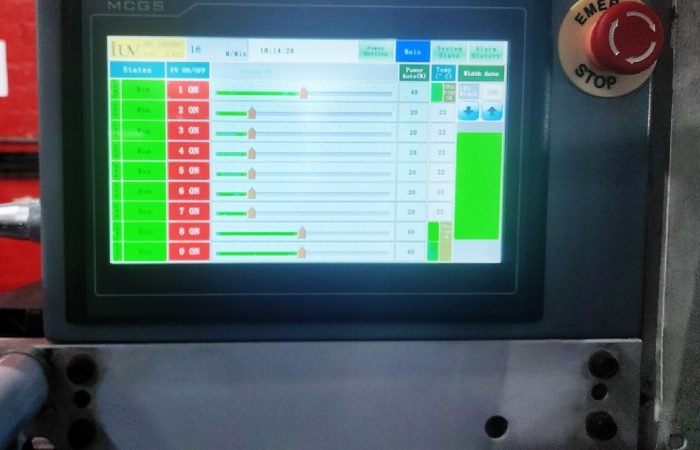The label printing industry thrives on precision, speed, and adaptability. With LED UV curing technology revolutionizing drying times and print quality, the debate between offset, flexo, and digital presses has never been more relevant. Let’s break down how each technology performs under LED UV—and which press fits your project’s demands.
LED UV Curing: The Game-Changer
LED UV systems use light-emitting diodes to instantly cure inks and coatings. Unlike traditional mercury-vapor UV lamps, LED systems:
- Cut energy use by 50-70% (no warm-up time, lower heat output).
- Extend lamp life (20,000 hours vs. 1,000-2,000 hours for conventional UV).
- Enable printing on heat-sensitive materials (thin films, shrink sleeves).
This tech pairs seamlessly with modern presses, but its impact varies across offset, flexo, and digital workflows.
Offset Printing: Precision Meets Volume
Offset presses dominate high-volume label jobs requiring razor-sharp detail. Here’s how they fare with LED UV:
Pros:
- Unmatched color consistency for brand-critical labels (cosmetics, beverages).
- Smooth gradients and fine text, thanks to precise ink transfer via plates.
- Lower per-unit costs for runs exceeding 10,000 labels.
Cons:
- Longer setup times: Plate creation and press adjustments eat into tight deadlines.
- Limited material flexibility: Struggles with stretchy or uneven substrates.
LED UV’s Role: Faster curing allows offset presses to handle thicker ink layers (e.g., metallic effects) without smudging. Ideal for premium wine labels or luxury packaging.
Flexo Printing: Speed Versatility
Flexography rules mid-range volumes and flexible packaging. Modern flexo presses with LED UV deliver:
Pros:
- Faster job changeovers with digital plate imaging.
- Broad substrate compatibility (polypropylene, PE films, recycled paper).
- Water-based and UV inks reduce environmental impact.
Cons:
- Lower resolution than offset (though HD flexo plates are closing the gap).
- Anilox roller inconsistencies can cause color variation.
LED UV’s Role: Cures inks on heat-sensitive films instantly, eliminating warping. Perfect for snack bags, pharmaceutical labels, or squeezable pouches.
Digital Printing: Agility for Short Runs
Digital presses (inkjet/toner-based) thrive in customization and fast turnaround. Add LED UV, and you get:
Pros:
- Zero plates or setup: Direct-to-substrate printing slashes lead times.
- Variable data printing (QR codes, serialized labels) without slowing production.
- Cost-effective for batches under 5,000 labels.
Cons:
- Higher per-unit costs for long runs.
- Limited ink opacity for dark substrates.
LED UV’s Role: Enhances scratch resistance and color vibrancy. A go-to for craft beer labels, event wristbands, or limited-edition products.
Narrow Web Presses: Where They Shine
Most LED UV label printing happens on narrow web presses (web widths under 20 inches). Key considerations:
- Offset: Best for static designs and high volumes (e.g., shampoo labels).
- Flexo: Balances speed and material diversity (e.g., frozen food packaging).
- Digital: Maximizes agility for seasonal or regional campaigns (e.g., holiday-themed promotions).
Decision Checklist: Which Press Fits?
- Run Length:
- Offset: 10,000 units.
- Flexo: 5,000–50,000 units.
- Digital: 1–5,000 units.
- Material:
- Offset: Smooth, rigid stocks.
- Flexo: Stretchy films, textured papers.
- Digital: Pre-coated synthetics, paper.
- Design Complexity:
- Offset/Flexo: Pantone colors, gradients.
- Digital: Variable data, hyper-personalization.
- Sustainability Goals:
- LED UV cuts energy use across all presses. Flexo’s water-based inks add eco-points.
Final Take
LED UV curing isn’t a one-size-fits-all upgrade—it amplifies each press’s inherent strengths. Offset delivers premium quality for long runs, flexo balances speed and adaptability, and digital prioritizes flexibility. Match your label’s substrate, volume, and design needs to the right tech, and let LED UV handle the rest.
Need a deeper dive? Share your project specs, and we’ll map your ideal press setup.












